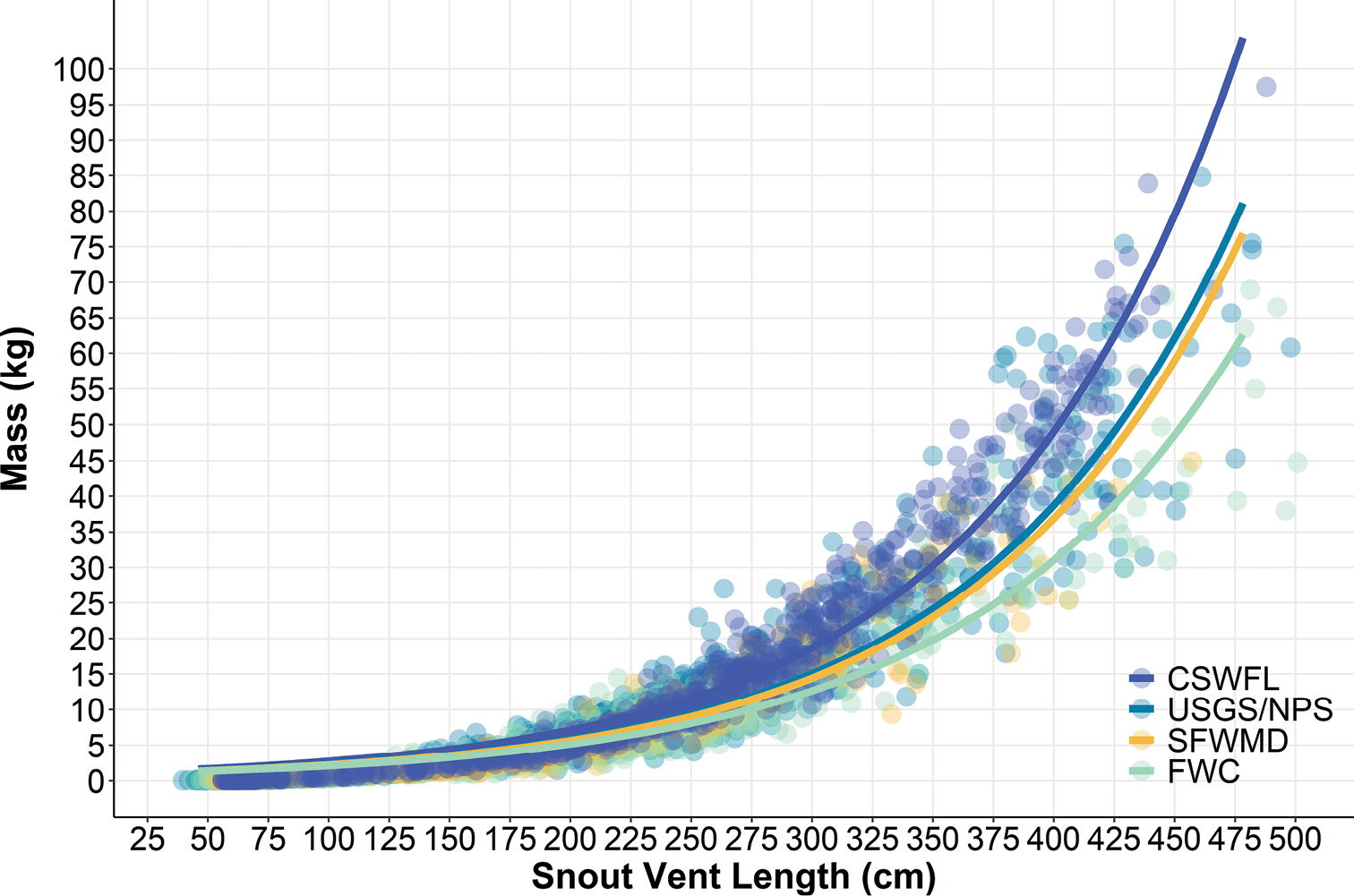
|
||
|
Relationship between snout-vent length (SVL; range: 34.44 to 500.9 cm) and mass (range 0.04 to 97.5 kg) of Burmese pythons (Python molurus bivittatus) measured in southern Florida, USA between 1995-2022 (n = 7,762). Data are from the U.S. Geological Survey and National Park Service (USGS/NPS, n = 3,723, Currylow et al. 2022c), Florida Fish and Wildlife Conservation Commission (FWC, n = 2,450, Suppl. material 1), South Florida Water Management District (SFWMD, n = 630, Suppl. material 1), and Conservancy of Southwest Florida (CSWFL, n = 959). Explanations for observed differences in mass-length relationships are not yet well-characterized for Burmese pythons but may be influenced by several factors (see Size Distribution section), including habitat-driven features like prey availability as well as capture method. For example, programs that predominantly use scout snakes (e.g., CSWFL) appear to result in the capture of larger, reproductive adult pythons (e.g., Smith et al. 2016) compared to pythons found during road cruising (e.g., FWC and SFWMD; see Removal Program and Scout Snake sections). |